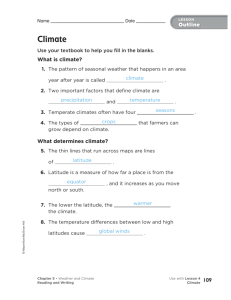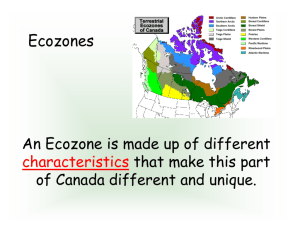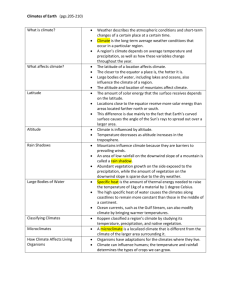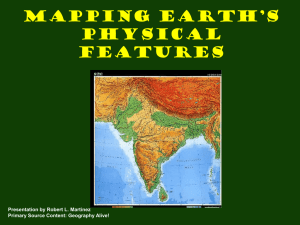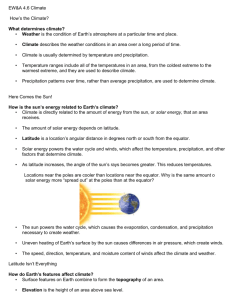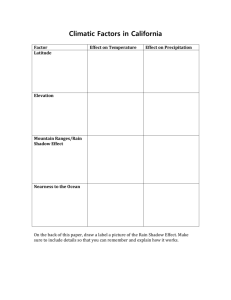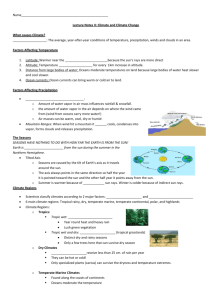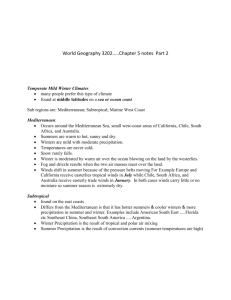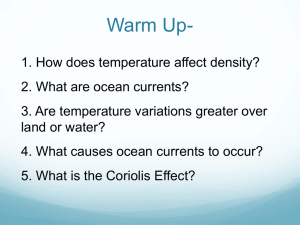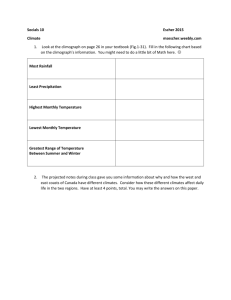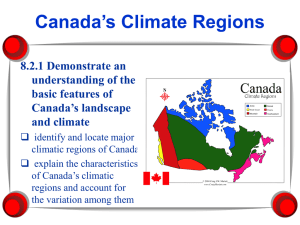File
advertisement
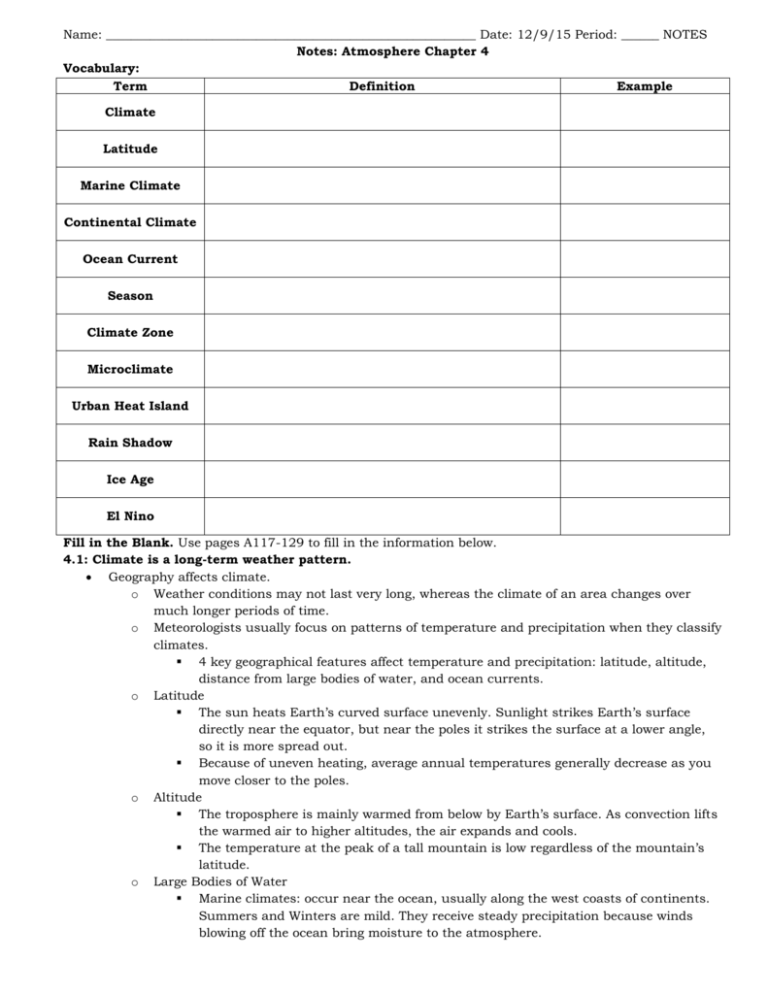
Name: ___________________________________________________________ Date: 12/9/15 Period: ______ NOTES Notes: Atmosphere Chapter 4 Vocabulary: Term Definition Example Climate Latitude Marine Climate Continental Climate Ocean Current Season Climate Zone Microclimate Urban Heat Island Rain Shadow Ice Age El Nino Fill in the Blank. Use pages A117-129 to fill in the information below. 4.1: Climate is a long-term weather pattern. Geography affects climate. o Weather conditions may not last very long, whereas the climate of an area changes over much longer periods of time. o Meteorologists usually focus on patterns of temperature and precipitation when they classify climates. 4 key geographical features affect temperature and precipitation: latitude, altitude, distance from large bodies of water, and ocean currents. o Latitude The sun heats Earth’s curved surface unevenly. Sunlight strikes Earth’s surface directly near the equator, but near the poles it strikes the surface at a lower angle, so it is more spread out. Because of uneven heating, average annual temperatures generally decrease as you move closer to the poles. o Altitude The troposphere is mainly warmed from below by Earth’s surface. As convection lifts the warmed air to higher altitudes, the air expands and cools. The temperature at the peak of a tall mountain is low regardless of the mountain’s latitude. o Large Bodies of Water Marine climates: occur near the ocean, usually along the west coasts of continents. Summers and Winters are mild. They receive steady precipitation because winds blowing off the ocean bring moisture to the atmosphere. Continental climates: occur in the interior of continents. Most have large differences between daytime and nighttime temperatures because they lack the influence of nearby oceans. o Ocean Currents Influence climates by transferring energy from one part of an ocean to another. Warm-water currents carry warmth from the tropics to higher latitudes, where they help keep coastal regions warm. C The Gulf Stream is a major warm-water current. Seasonal changes are part of climate. o Seasons occur because the amounts of energy that the Northern and Southern Hemisphere receive from the sun change over the course of the year. o How can two locations have the same average temperature, but have different temperatures in summer and winter? o The seasonal pattern of precipitation can determine the types of plants that grow in a region and the length of the growing season. 4.2: Earth has a variety of climates. The most widely used system groups climates by temperature and precipitation. The 6 major climate zones of this classification system are humid tropical, dry, moist mid-latitude with mild winters, moist mid-latitude with severe winters, polar, and highland. Climate zones are further divided into subclimates. o Scientists choose one characteristic that makes it different from other subclimates within the same climate zone. List some features that influence local climates. Cities are usually warmer than surrounding rural areas. Mountains can affect precipitation because: o Air rises as it flows over a mountain. o As the air rises and cools, it condenses into clouds. Areas near the side of a mountain that faces the oncoming wind may get heavy precipitation. o After passing over the mountain, the air is much drier because it lost moisture through condensation and precipitation, so you can get a dry area on the downwind side of a mountain.
